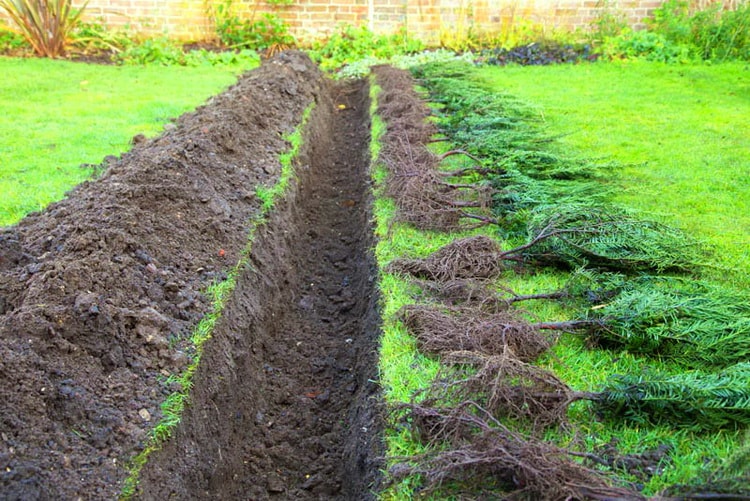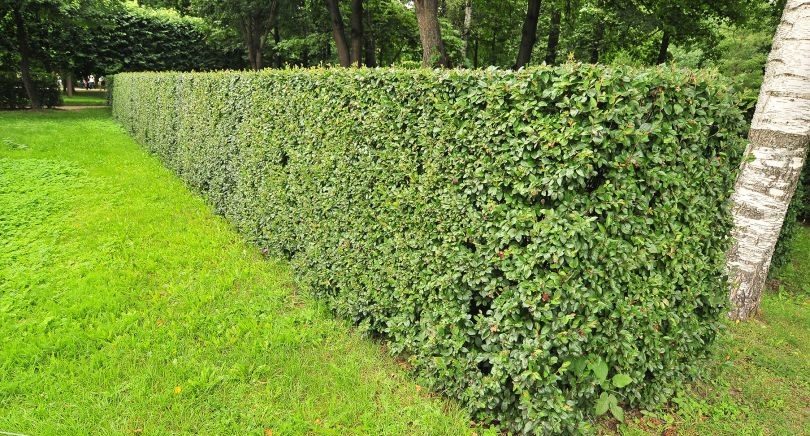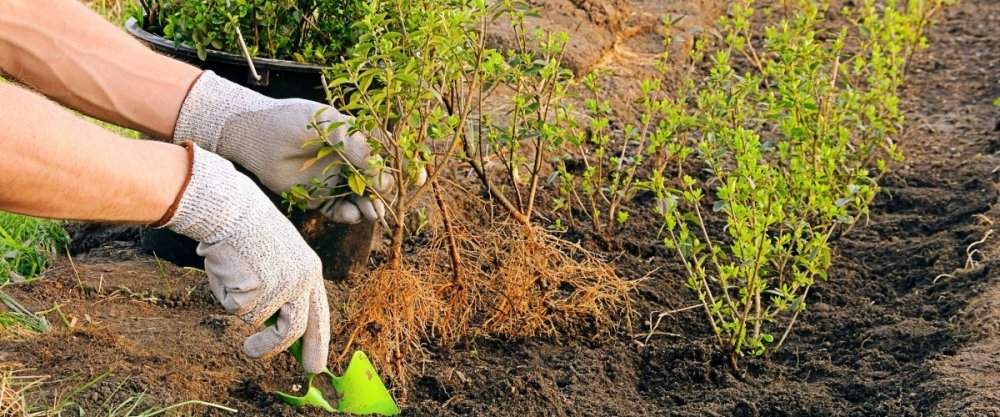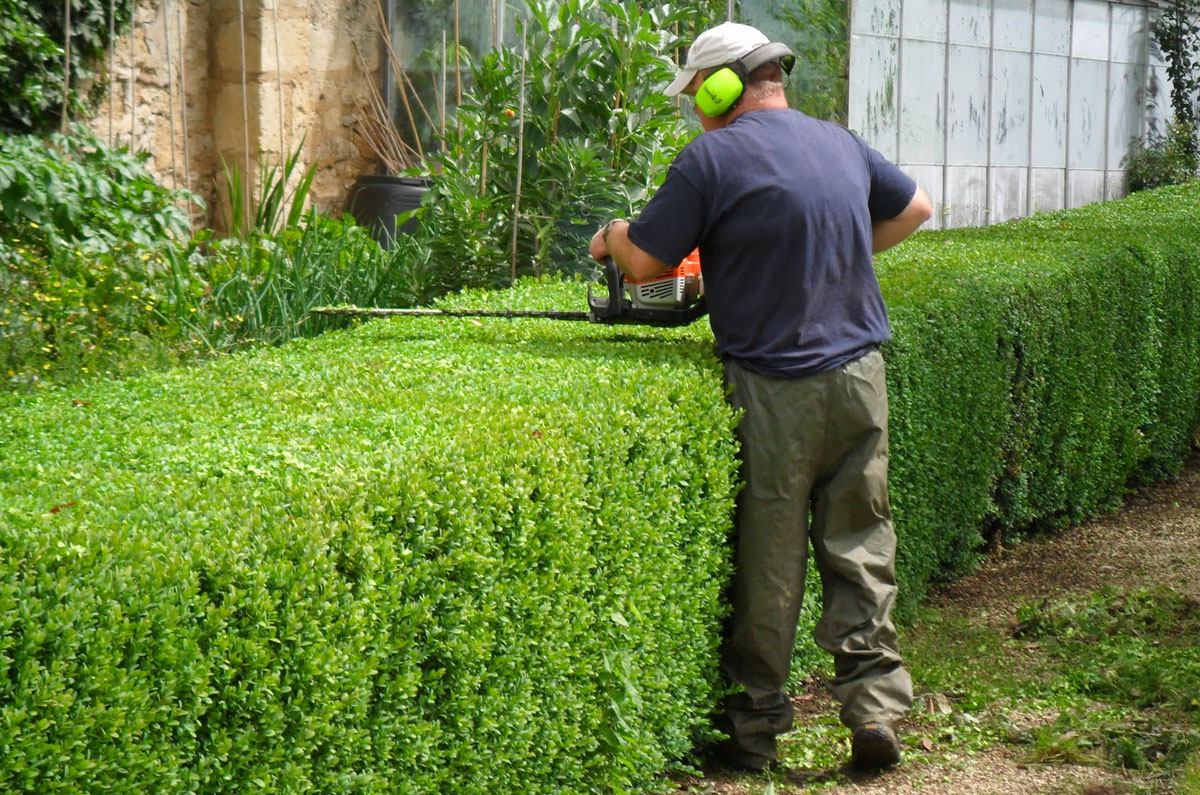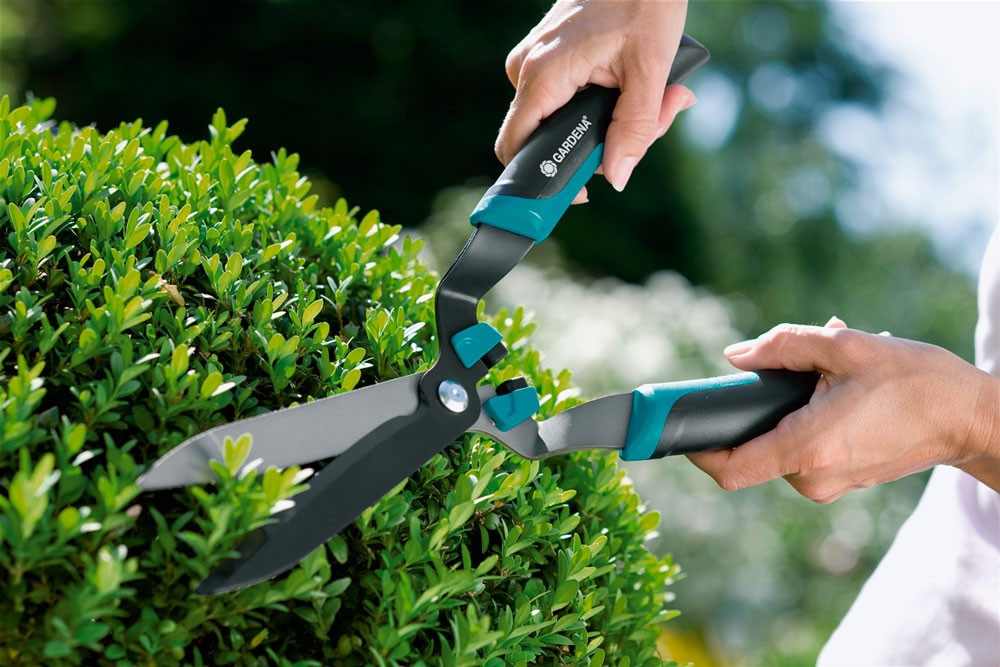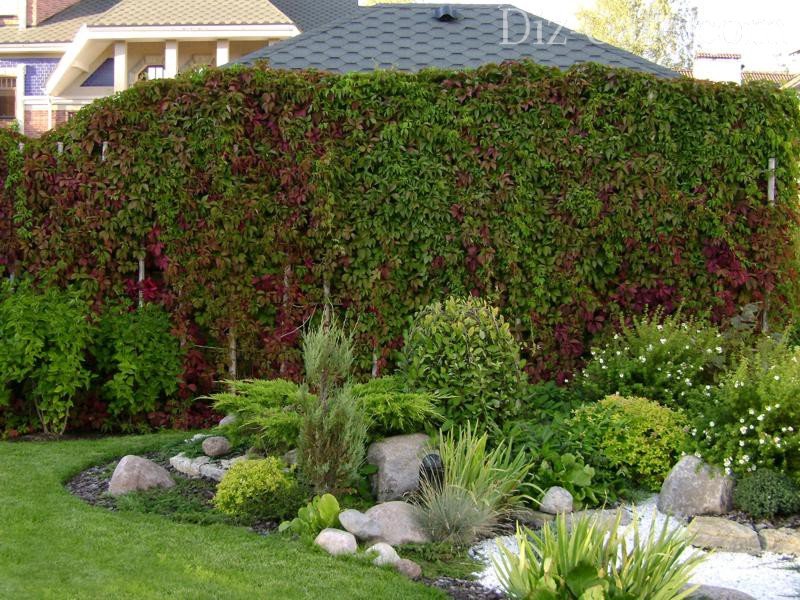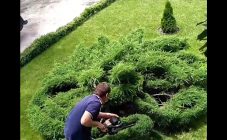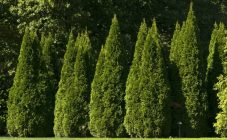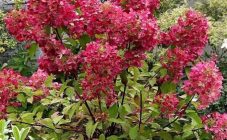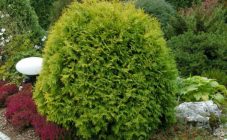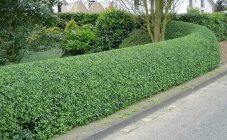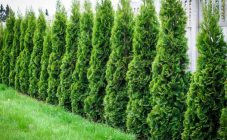Content:
Hedges are an integral part of the landscape design of a summer cottage. They allow you to designate the boundaries of the garden, its individual zones, to disguise any flaws, buildings.
Description of hedges
Hedges are used as a background for a variety of flowering compositions. Very often they play the role of a kind of space insulators. For such purposes, bosquets are very well suited - zones that have a closed and regular shape, which are planted with plants that respond well to a haircut. Place them very close to each other to create a dense hedge.
The living "fence" is divided in height into several categories:
- low - from 0.5 to 1 m in height;
- medium - 1-3 m,
- high - over 3 m.
Very low hedges that are below 0.5 m are called curbs.
Planting a hedge
Planting schemes in such a planting may be different. It all depends on the type of culture, the purpose of the fence, the growth rate and the exactingness of the growing conditions in plants. In rows, the distance between trees and shrubs can vary from 15 to 35 cm, in row spacings - from 35 cm to a meter.
When using breeds with loose branching, it is best to plant crops in two or even three rows (yellow acacia), with a denser one - a single-row planting is enough (spirea, cotoneaster, hawthorn).
Selection of plants
The most suitable plants for a living fence are all types of western thuja, especially decorative forms, evergreen buckthorn, hawthorn, common privet, euonymus. Slightly less commonly used in landscaping of this kind are juniper and bubblegum, although they are also excellent material for creating hedges.
For free-growing hedges, plants such as:
- chubushnik;
- barberry;
- felt cherry;
- pyracantha;
- all types of currants.
For creating middle walls or labyrinths, a brilliant cotoneaster is suitable. This shrub is also suitable for those areas that are left unattended for a long time, and vegetation - without watering and care. The cotoneaster is not picky about the conditions, so many summer residents fell in love with it.
For a dense living wall, planting material such as thuja, conifers, rose hips, goose (pshat) are perfect. They will allow you to create a tall plant fence, which will hide the site from prying eyes, while no one can penetrate it.
Additionally, there is no need to arrange an artificial fence around the territory. If there is one, ivy can be planted along it, which will "float" along the fence, hiding it with its shoots and foliage.
Hedge Care
Before planting plants, you need to prepare the site:
- dig planting holes at the required distance, most often trenches are dug;
- fertilize;
- prepare the soil composition if necessary (if required by the breed).
After planting, the plants are watered and left for a while to take root, they are periodically examined. It is best to plant planting material with an earthen clod in which it grew before - this is less likely to damage the roots.
When choosing an area for planting, it should be borne in mind that most shrubs do not tolerate stagnant moisture. If the soils are heavy, lighten them and provide good drainage.
Trimming and shaping
Plants can be trimmed within a few months after planting. During this time, the breeds will have time to take root and form new shoots. If you pull it for a while, it will be very difficult to bring the hedge back into shape.
Many winter-hardy deciduous plants are planted in a permanent place in the fall, the formation of the appearance of the planting begins in early March. Such rocks are pruned to 1/3 of their height. If crops are planted in spring, the first pruning is done only after a year. The first pruning is carried out in order to form new shoots, so it is made maximum. This allows you to get a voluminous crown, which is necessary to create a hedge.
In the second year of planting for the summer season, 4-5 pruning is carried out, this increases the density of the branches, at the same time the required form of planting is given.
In subsequent years, pruning of shoots should be done only to make the appearance of the hedges neat. Deciduous - pruned in March-April, then in August-September. Conifers - in April or September, if necessary, you can trim again for the season.
Pruning tools
For the care and formation of the crown of plants, it is necessary to carry out regular pruning. In this case, scissors will become a necessary element. There are two types of them: mechanical and electrical.
Mechanical shears
There are several varieties:
- short handles and a thickened blade - they usually cut flowers, thin shoots;
- elongated handles and blade - they work with the formation of the crown of all shrubs and tree species.
Electric scissors
With such a tool it is much more convenient to care for the plantings. They are suitable for cutting any branch thickness. They are even suitable for cutting grass.
Scissors differ in the length of the blade: there is a short one (used to create a curly crown) and an elongated one (for regular trimming).
The disadvantage of such scissors is that they require a connection to the mains or run on battery power - this can be hazardous to health.
What kind of tool to work directly for the gardener on his site, it is up to him to decide.
Growing features
The only drawback is the growth rate of the planting material.It is best to purchase seedlings 3-4 years old for planting plants for hedges. They are already prepared for formation, they have relatively gained their power.
Popular plants for the Moscow region
Before planting randomly plants for a hedge, you need to clearly form an idea of its appearance, for which it is planted.
Thuja western
Smaragd - has a pyramidal crown shape, needles are bright green. A plant can reach a height of 4 to 6 m, a width - up to 2. Refers to fast-growing - it can grow up to 20 cm per year. It tolerates frost well, grows on any soil, is unpretentious and undemanding to conditions.
Brabant - found in 2 life forms: shrub and tree. Most often, bush is used in landscaping. A very fast-growing culture - it can grow in size up to 50 cm per year. It does not withstand very severe frosts, therefore it requires shelter for the winter. The shape of the crown can be varied, responds very well to haircuts.
Danica is a spherical thuja. It grows slowly, only 3-4 cm per year. The plant itself is not very tall - from 0.6 to 1 m, the crown in diameter can reach up to 1 m. It belongs to winter-hardy varieties, does not tolerate prolonged stagnation of moisture.
Common privet
Compared to other breeds, privet has few varieties, among them the most popular for the Moscow region are only 2.
Aurea is a short shrub that can grow up to 1 meter in height. The leaves are bright, golden yellow in color, in the shade they can become rich green. If the winter is not very cold, then the bush can keep its decorative foliage on the shoots and winter well. It grows slowly. The plant itself is unpretentious to the conditions.
Atrovirens is a shrub that can grow up to 1.5 m in height, has dark green leaves, which will change color to purple-brown with the onset of autumn.
Barberry
The most popular types that are used in landscaping, in particular for creating hedges, are:
- Thunberg;
- ordinary;
- Ottawa.
Among them, for the Moscow region, there are the best varieties that develop well in this area, are less damaged by pests and diseases.
Superba is an Ottawa barberry, which retains the decorative crown throughout the entire spring-autumn season, has dark red leaves. In autumn, the color changes to yellow-orange. In height, the variety can reach up to 4 meters. It tolerates winter well, is not whimsical to growing conditions.
Atropurpurea Nana is a Thunberg barberry belonging to the undersized varieties. It grows only 70-75 cm in height. It can be planted close to each other - it reacts normally to tightness, the plant is compact. Possesses decorative purple-red foliage, with which it can easily winter if the weather conditions are not very severe. During the warm season, it is required to cut the branches 1-2 times to form the crown.
Albo-variegata is an ordinary barberry, a medium-sized variety. The shrub is capable of reaching a height of up to 1.5 m. The leaves are green, with whitish spots. Unpretentious to soil, but very light-loving variety. It hibernates well even without shelter. During the season, it must be cut a couple of times with hedge scissors.
Examples of bush mazes
You can plant a hedge not only along the fence or zone the space with it. By planting fast-growing or slow-growing shrubs along the paths, you can create a unique design of the site - labyrinths, if the size of the territory allows.

